All products featured are independently chosen by us. However, SoundGuys may receive a commission on orders placed through its retail links. See our ethics statement.
Best noise canceling earbuds
November 19, 2024

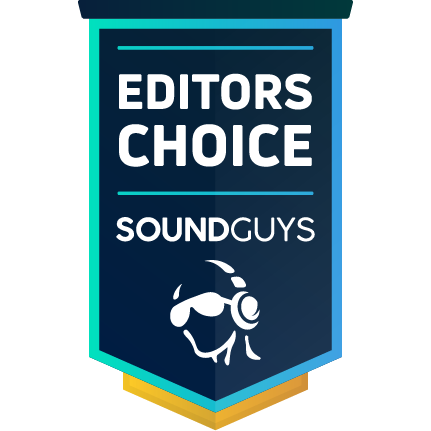







True wireless earbuds have come a long way from the original AirPods, but in terms of features, they tend to lag behind on- or over-ear headphones. However, we’re happy to report that enough companies have brought their A-game to wireless earphones—and by “A” game, we mean active noise canceling (ANC). Up until recently, when it comes to the best noise canceling wireless earbuds, the conversation would usually end up in a three-way fight between Sennheiser, Sony, and Bose. That is until Jabra dropped the Elite 10 Gen 2 and took the crown by a far margin. Still, there are a few other options worthy of consideration if you have more or less cash to burn.
The Jabra Elite 10 Gen 2 set a new standard for noise cancelation
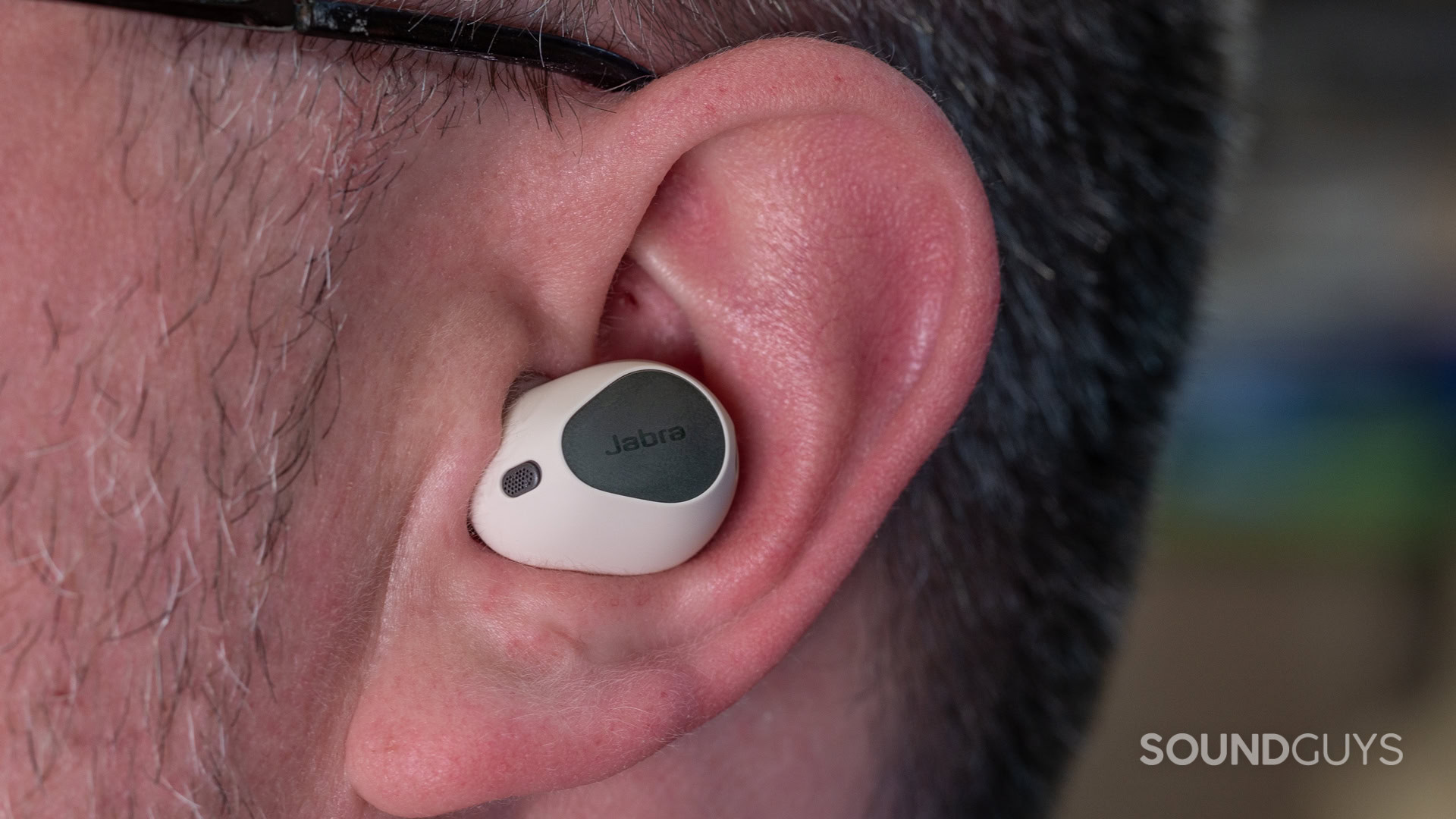
The Jabra Elite 10 Gen 2 sets a new standard for noise canceling wireless earbuds. Achieving an impressive 85.1% noise reduction, they surpassed the typical 83% ceiling of most competitors. This is complemented by good sound quality, comfortable fit, and versatile connectivity options, including the ability to connect to wired sources through its innovative case-as-transmitter feature.
Loading chart ...
The earbuds also boast premium features like spatial audio with head tracking, customizable controls, and a robust IP57 water resistance rating. While the future of software updates is uncertain due to Jabra’s parent company retiring the product line, the Elite 10 Gen 2 represents a culmination of Jabra’s expertise in portable audio, offering a compelling package that excels in noise cancelation, audio performance, and overall functionality.


The chart below shows how the sound of the Jabra Elite 10 Gen 2 was assessed by the Multi-Dimensional Audio Quality Score (MDAQS) algorithm from HEAD Acoustics.
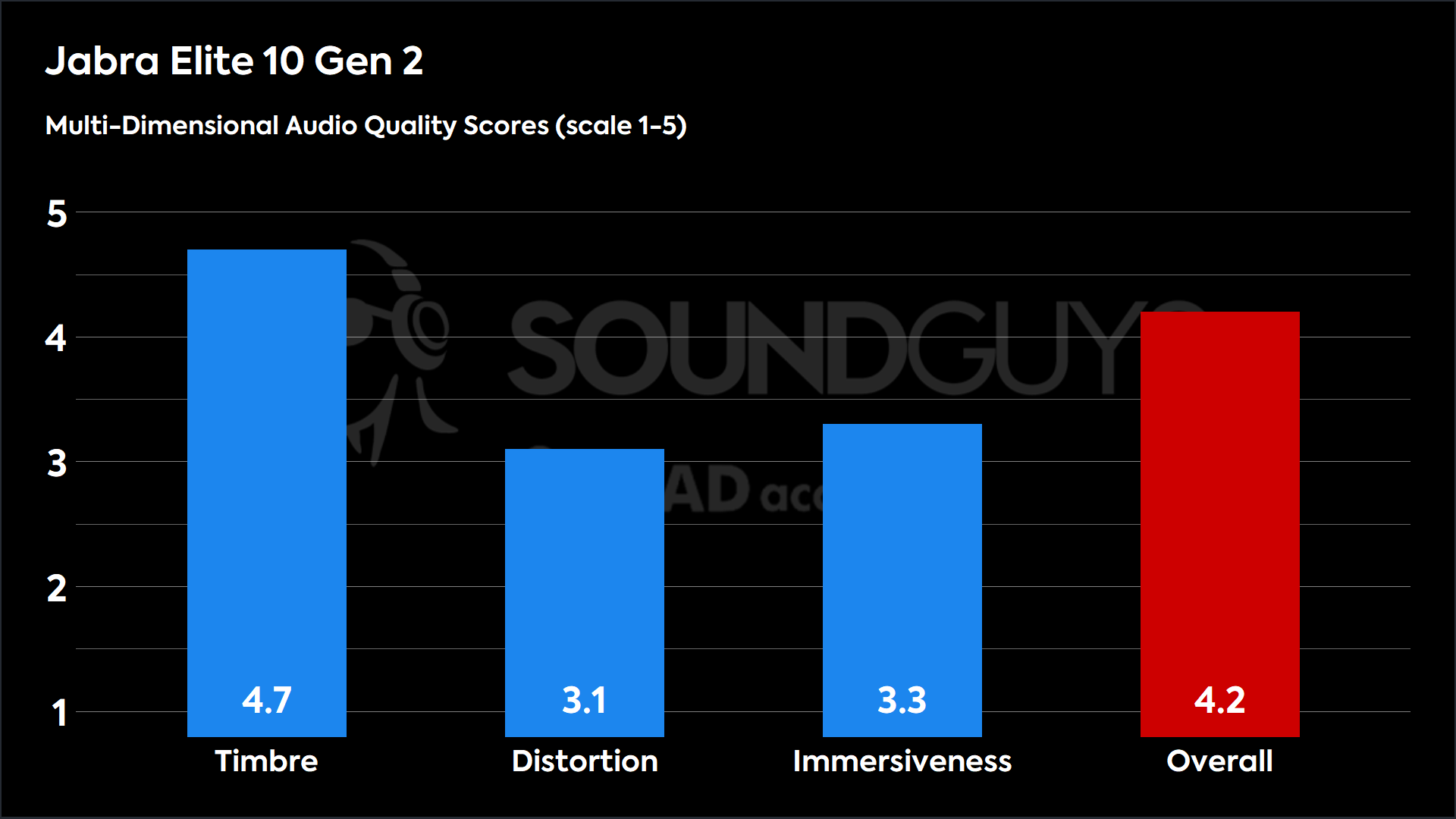
The Sennheiser MOMENTUM True Wireless 4 are fit for the future
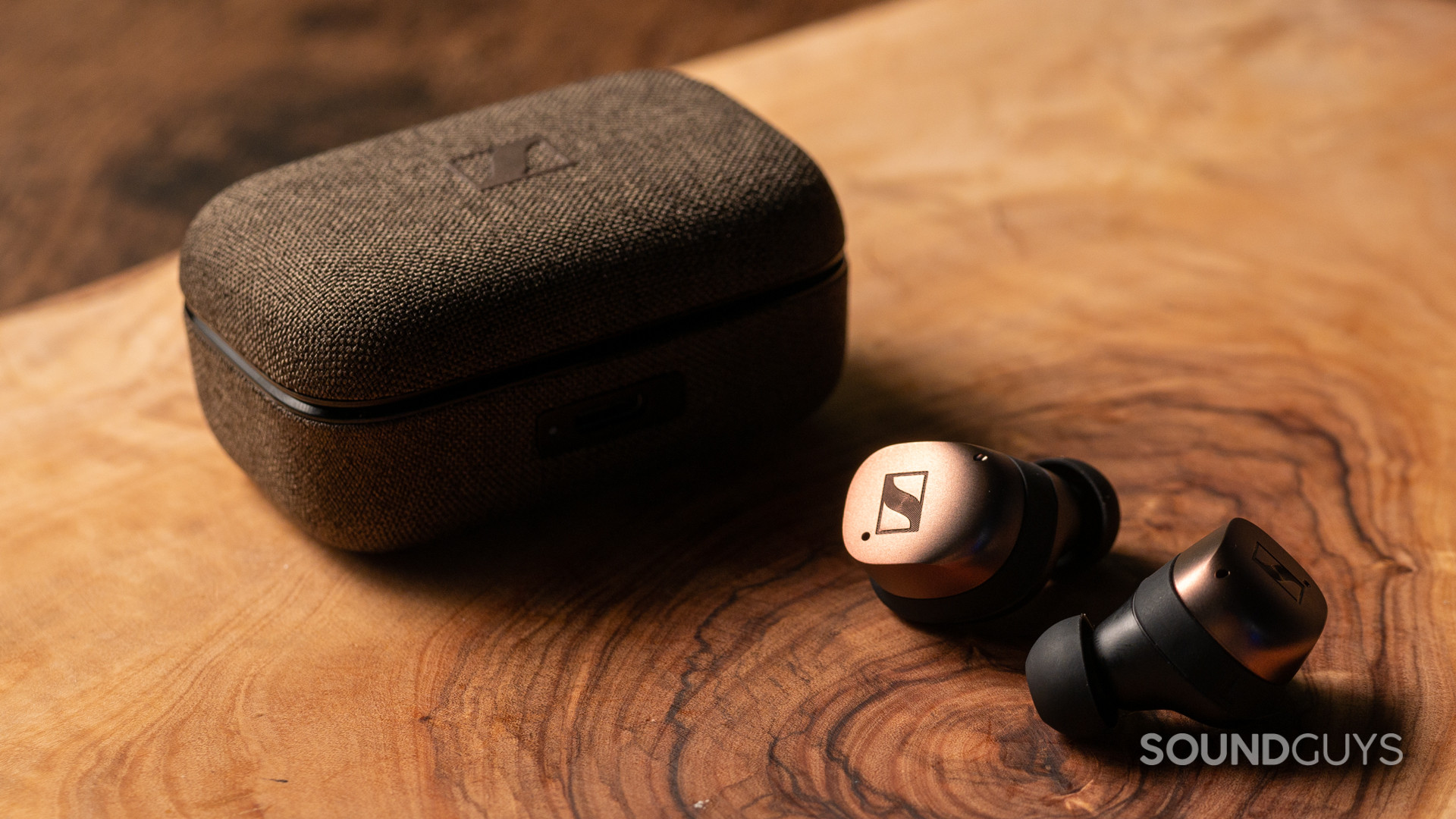
The Sennheiser MOMENTUM True Wireless 4 entered a crowded market of active noise canceling (ANC) earbuds and proved itself, posting 83% average noise attenuation. This makes them an excellent choice for environments like air travel or busy commutes, where effective noise cancelation is crucial.
Loading chart ...
In usage, the Sennheiser MOMENTUM True Wireless 4 offers a premium experience with its stylish design, a variety of ear tip sizes and concha fins for a secure fit, and intuitive touch controls customizable via the Sennheiser Smart Control app. This app further enhances the user experience by offering features such as a fit test for optimal ANC effectiveness, a 5-band equalizer, and firmware updates. Priced at $299.95, these earbuds boast a range of features, including an IP54 rating for dust and water resistance, support for Auracast and LE Audio, and aptX Lossless.
The chart below shows how the sound of the Sennheiser MOMENTUM True Wireless 4 was assessed by the Multi-Dimensional Audio Quality Score (MDAQS) algorithm from HEAD Acoustics.
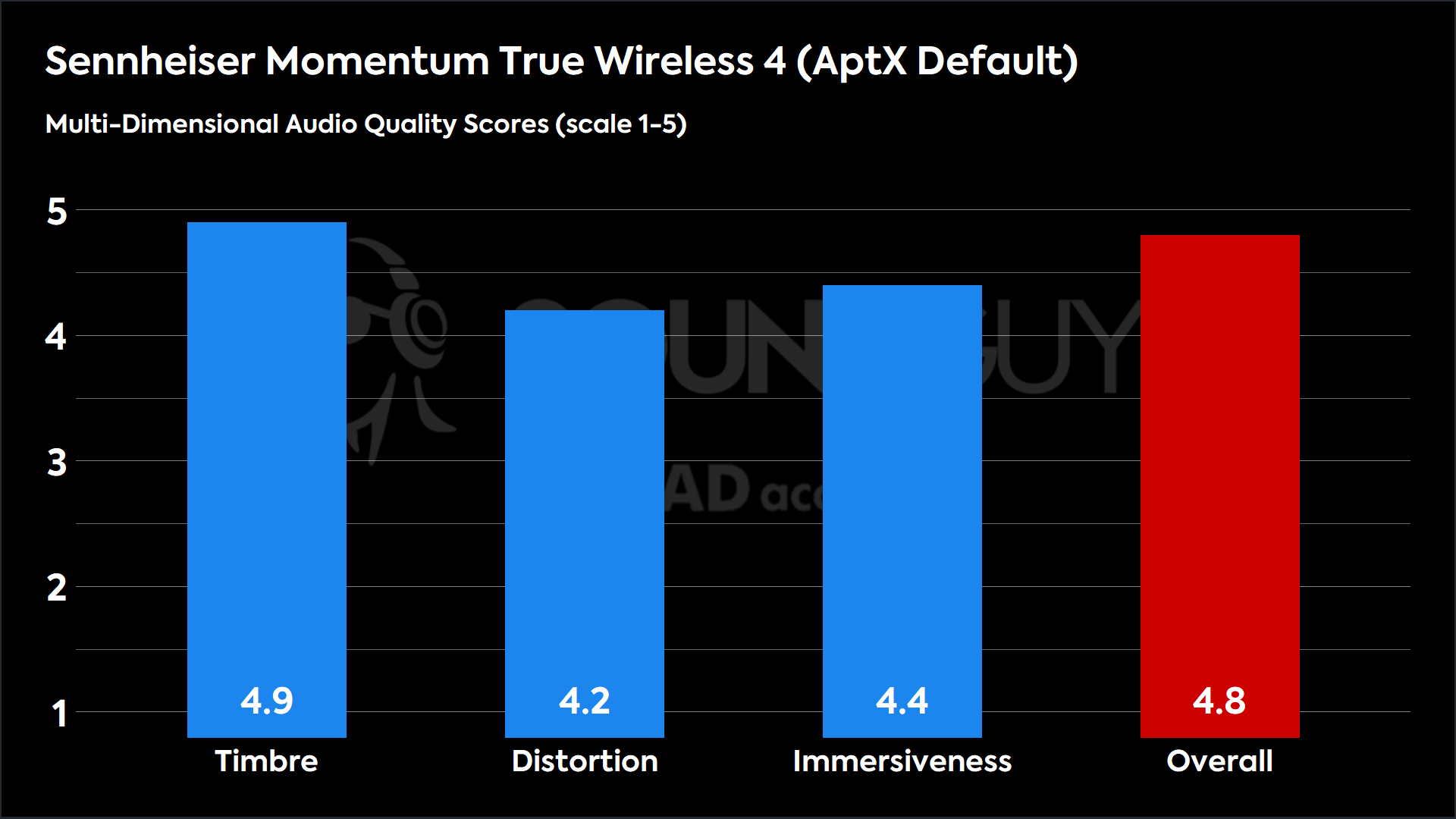
Sound quality is another highlight, with the earbuds delivering an excellent audio experience right out of the box. Despite these strengths, the earbuds are not without their drawbacks, particularly the sub-par microphone performance and the high price tag, which may deter some potential buyers. Still, the Sennheiser MOMENTUM True Wireless 4 are well-suited for those willing to invest in high-end earbuds that offer robust noise cancelation, exceptional sound quality, and a suite of future-proof features.


The Sony WF-1000XM5 is a top choice for Android and iOS
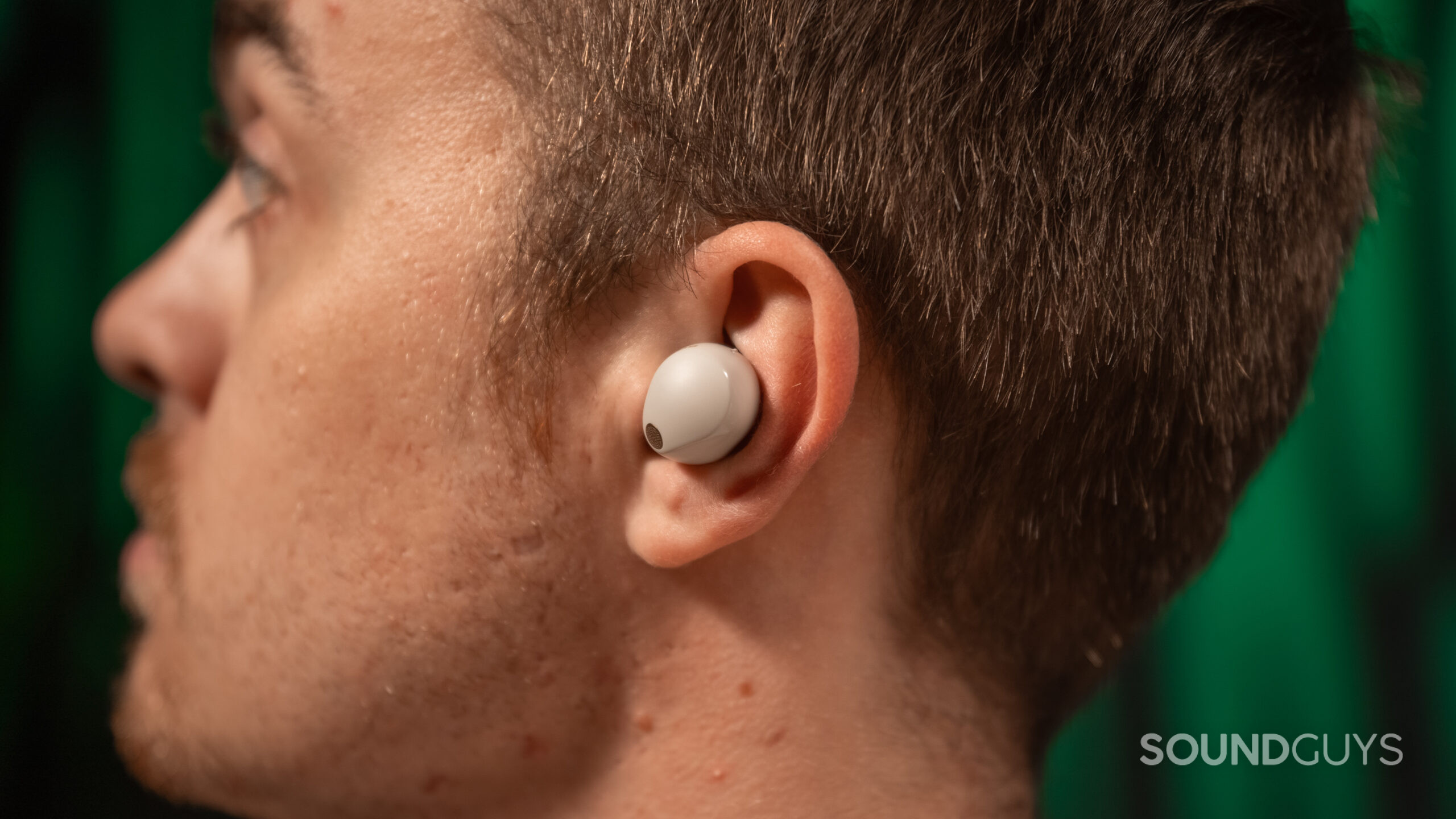
All else being equal, if you want a solid pair of do-it-all wireless earbuds, you want to buy the Sony WF-1000XM5. Sony made several improvements to its noise canceling technology, and these earphones reign as king regarding raw ANC performance.
Wireless earbuds tend not to do such a great job attenuating outside noise because they simply can’t devote a lot of power to the task, but Bluetooth 5.3 improves efficiency. You get the best of both worlds here: over 8-hours of battery life and effective ANC. The USB-C case provides two additional charge cycles and can fast charge the earphones. You can also place it atop a Qi wireless charging mat.
Loading chart ...
Sony equipped the WF-1000XM5 with two new processors: the Integrated Processor V2 and the HD Noise Canceling Processor QN2e to improve ANC performance. In combination, these allow the earbuds to process the signals from the six microphones (three on each bud). New dual feedback mics on the WF-1000XM5 are used to better monitor noise in the low frequencies.
The improved foam ear tips are more flexible and do a great job of blocking out noise, providing better isolation than those supplied with the WF-1000XM4. They reduce noise by up to 15dB in the low end and up to 50dB for sounds above 1kHz, which is comparable to good earplugs.
These Sony earbuds may be expensive, but they do everything very well. If you have the money, you won’t be disappointed picking up these premium noise canceling wireless earbuds.


The Bose QuietComfort Ultra Earbuds bring next-level features
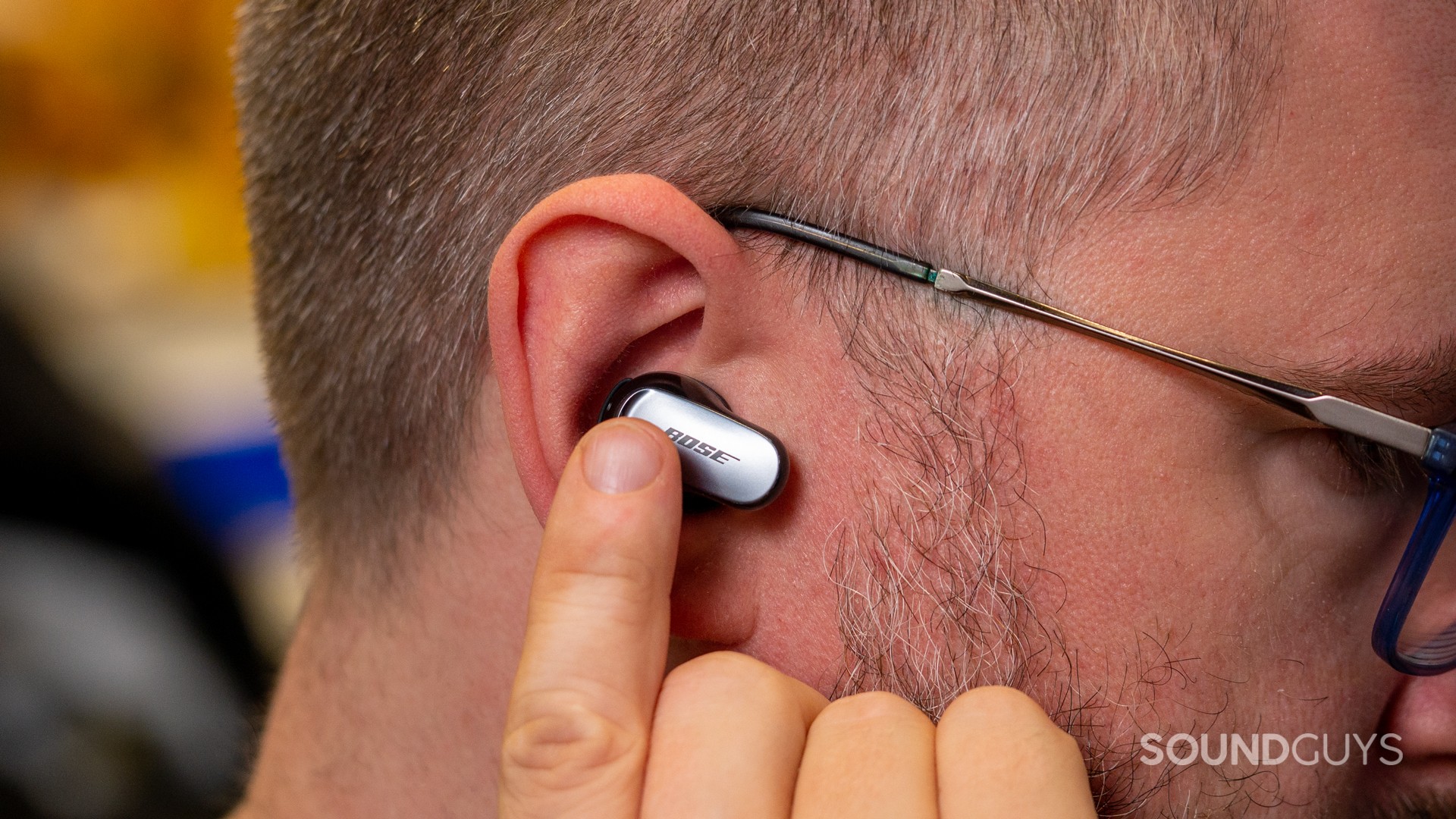
The Bose QuietComfort Ultra Earbuds stand out in the realm of wireless earbuds, particularly for their superior Active Noise Cancellation (ANC) capabilities and unique design features. These earbuds excel in reducing external noise, especially effective under 400Hz, where they can diminish noise by up to 34dB, making them ideal for noisy environments or travel. Above 1kHz, they achieve up to 39dB noise reduction, which is quite impressive. Their ovoid-shaped nozzle, a departure from traditional cylindrical designs, not only ensures a more secure and comfortable fit but also enhances passive noise isolation. This shape aligns better with the natural form of the ear canal, offering both comfort and improved sound isolation.
Loading chart ...
In terms of exclusive features, the Bose QuietComfort Ultra Earbuds boast Snapdragon Sound with aptX Lossless support, a standout addition that promises high-resolution audio and low-latency listening. This is particularly beneficial for Android users, as it ensures compatibility with the latest technology in sound quality and connectivity. However, it’s worth noting that these earbuds may not be the best choice for those seeking a neutral frequency response or spatial audio, as they tend to emphasize bass and treble.
Despite their higher price point and slightly bass-heavy sound profile, these earbuds are a robust choice for those prioritizing top-tier noise cancelation and unique fitting features. The earbuds’ design and ANC technology make them a strong contender in the high-end earbud market, particularly for Android users looking to leverage the latest audio technology advancements.

The best bang for your buck is the Anker Soundcore Space A40
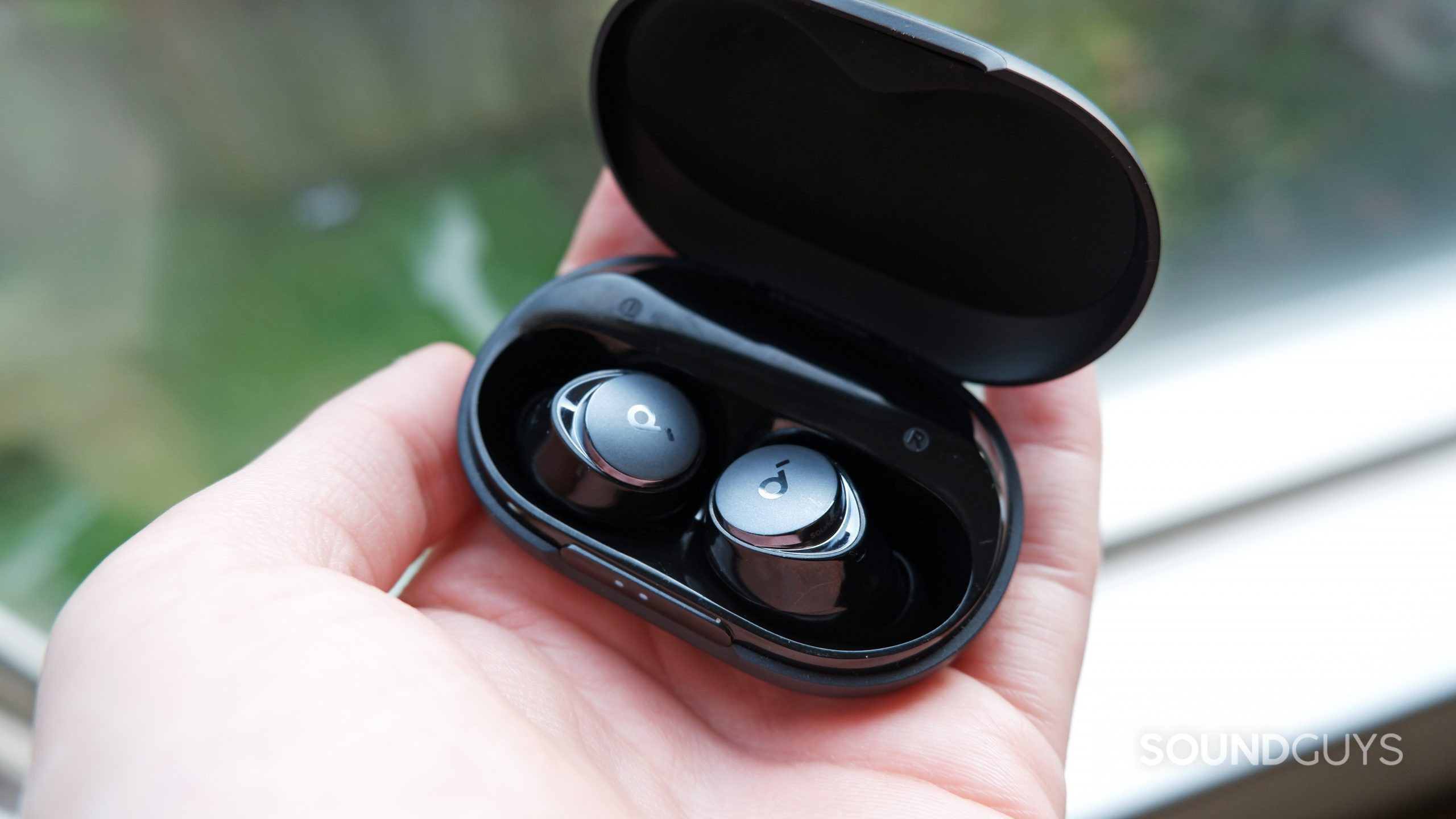
The Anker Soundcore Space A40 delivers excellent ANC without hurting your wallet. Not everyone has the dough to buy the flagships that pop up on so many lists, and Anker cleverly undercuts the prices of premium earbuds. The Soundcore Space A40 does not skimp on what’s important: good sound, excellent (at any price) noise cancelation, and connectivity. The ANC concentrates mainly on low-pitch noise. For example, at 100Hz, the Soundcore Space A40 filters up to 40dB of noise.
Loading chart ...
Out of the box, the earbuds sound fairly subdued without any substantial exaggerations. However, the accompanying app has a large selection of EQ options to suit most people’s tastes. The Anker Soundcore Space A40 utilizes Bluetooth 5.2 with LDAC, AAC, and SBC codecs, which is a boon for Android and Apple users alike, as is the Bluetooth multipoint feature included.
The buds are certified with an IPX4 rating, covering most people’s case uses. Finally, according to our tests, the battery life reaches 7 hours and 55 minutes, which ought to get you through most work shifts. The only real qualm is that the charging case has somewhat unreliable hinges, requiring some extra attention.


For iPhone users, the Apple AirPods Pro (2nd gen) is the best noise canceling option
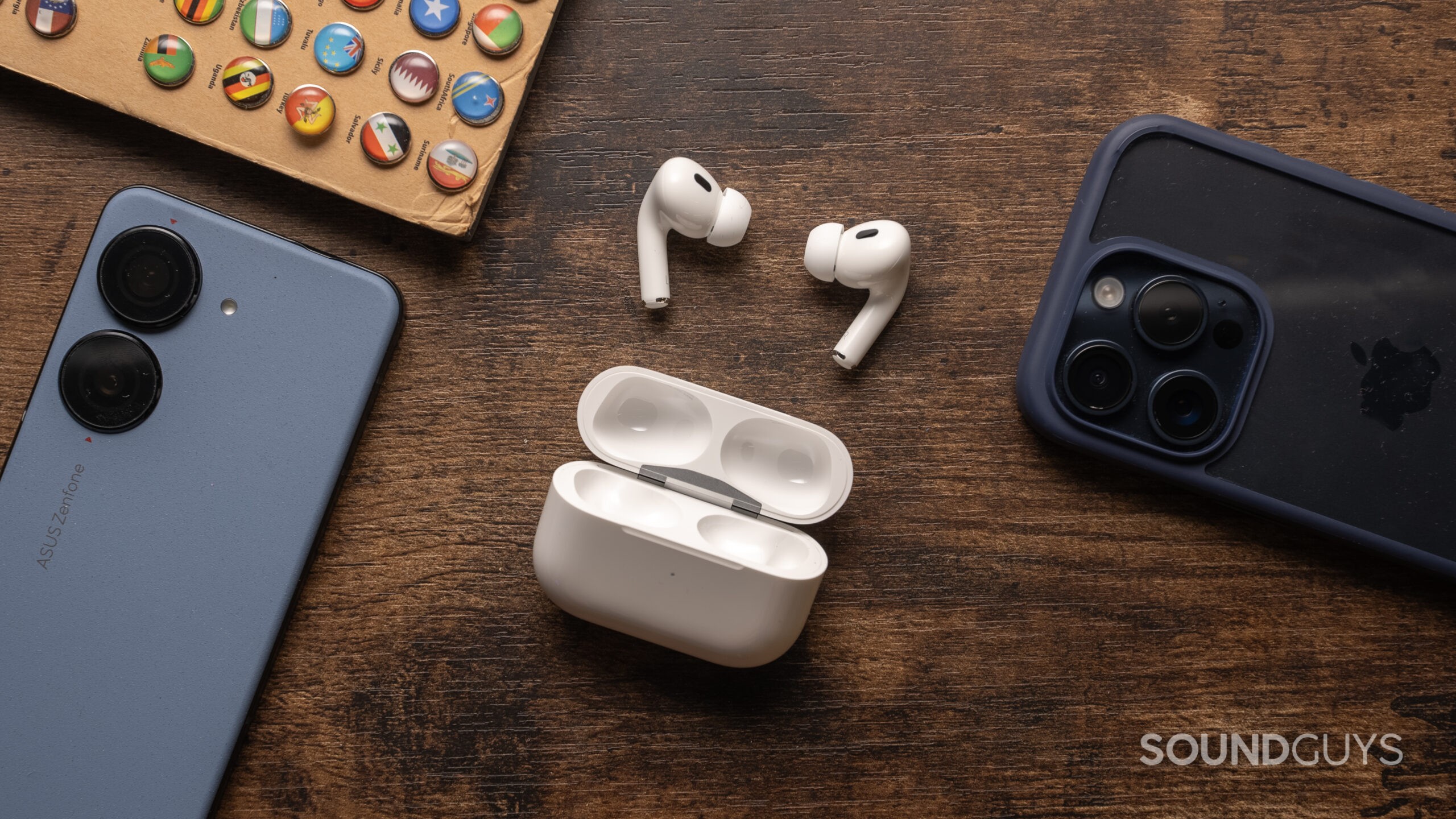
Apple updated its iconic AirPods Pro line with the Apple AirPods Pro (2nd Gen), with even better noise canceling this time. The AirPods Pro has four ear tip options to ensure a good seal so you can get the most out of the ANC.
Apple recently refreshed the AirPods Pro (2nd Gen) with a new USB-C case, replacing the Lightning port, making them compatible with a wider range of charging cables. They also improved the dust resistance, going from IPX4 to IP54, making them even more workout-friendly. You can also more easily find your lost earbuds with the new H2 chip and speaker in the case, which makes a sound to help you locate it when you’ve lost it.
Loading chart ...
The ANC can reduce most noises anywhere between 20 and 30dB, depending on the range, which is a massive improvement from the previous generation. For even better ANC in AirPods, we recommend stepping up to the Apple AirPods Max — which outperforms even the best from Bose, Sennheiser, and Sony.
Unlike the Samsung model mentioned below, the batteries last north of 5 hours, and the Apple earphones also offer a few hidden perks like a constantly running DSP engine that alters the units’ performance to match your ear best. Additionally, you can take a break from blocking out the world to listen in to conversations by pinching one of the stems to activate transparency mode.

Save some money with the AirPods 4 with ANC
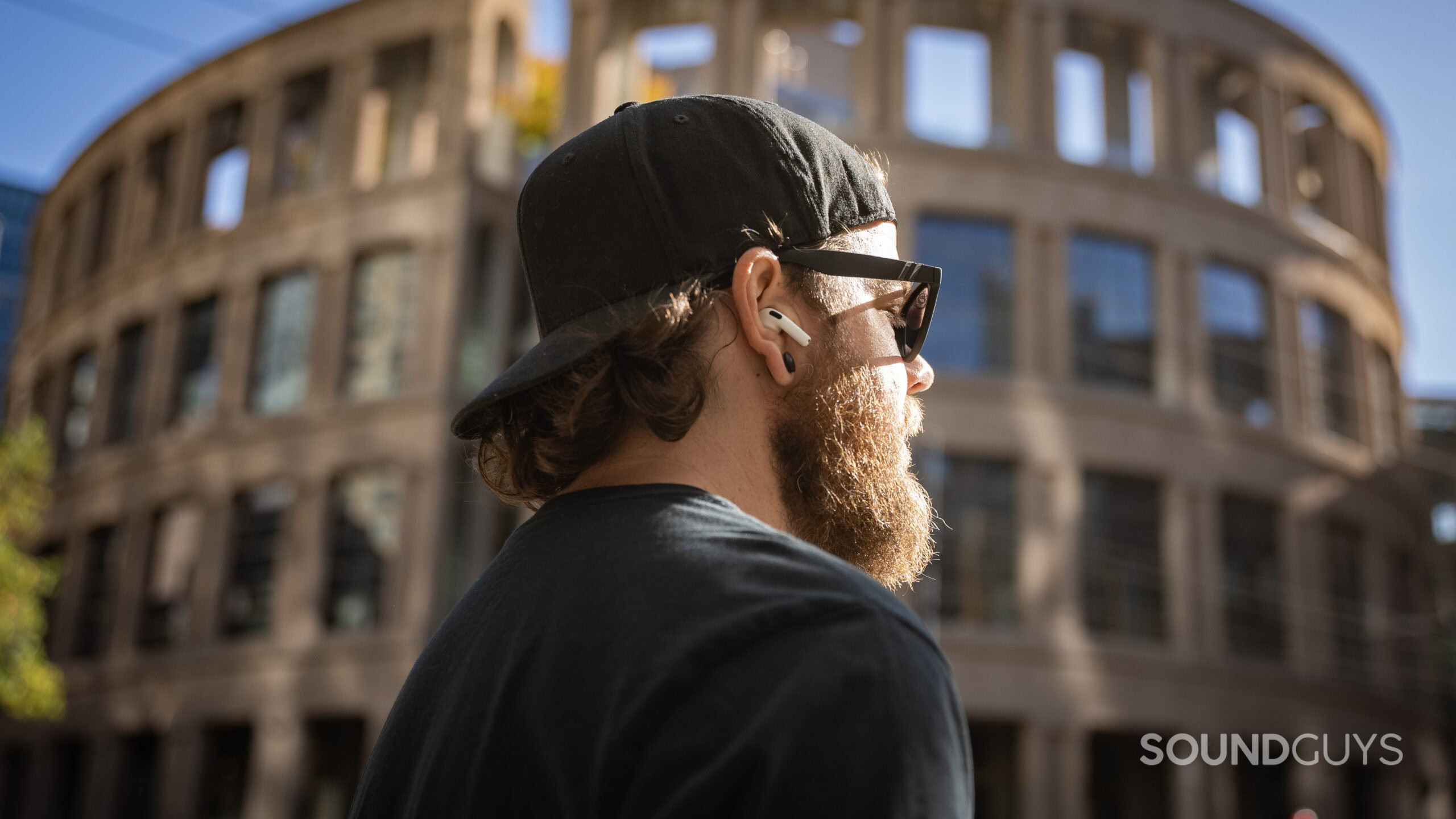
The Apple AirPods 4 with ANC introduces active noise cancelation to the unsealed AirPods line for the first time, making it a more affordable option for iPhone users at $179. Though the unsealed design doesn’t provide the same passive isolation as the AirPods Pro 2, Apple has done a commendable job with ANC, offering around 20dB of noise reduction, especially in the mid and high ranges.
The AirPods 4 with ANC is ideal for those who prefer earbuds without ear tips but still want noise cancelation and integration with Apple’s ecosystem. However, if you prioritize fit, noise isolation, and sound quality, the AirPods Pro 2 remains the superior choice with its customizable ear tips and better overall performance. For casual listeners, though, the AirPods 4 with ANC delivers solid performance at a lower price point, with additional features like Adaptive Audio and Conversation Awareness for dynamic sound control.

If you have the money, get the Master & Dynamic MW09
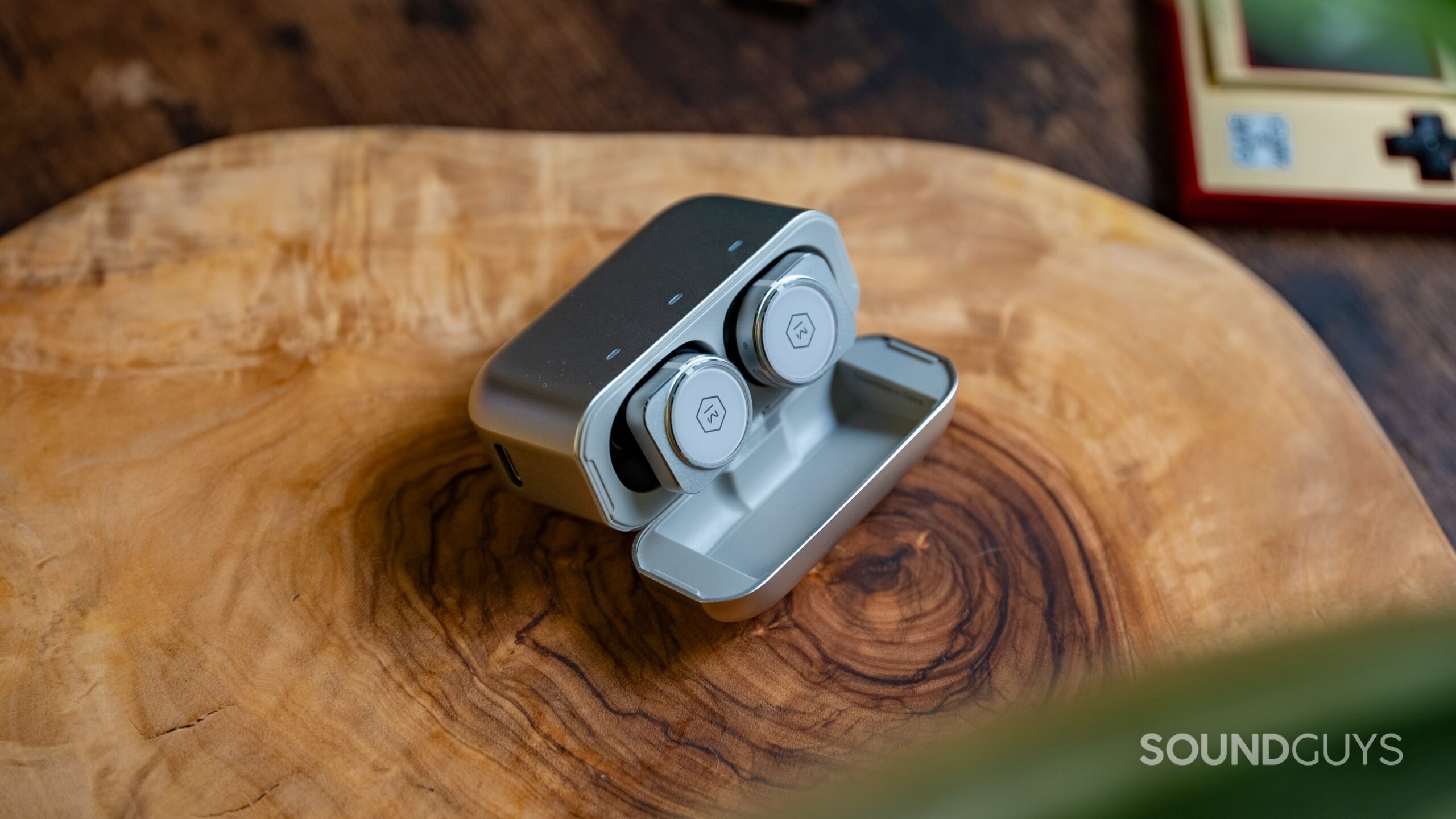
If you have the means to spend this much money on earbuds, you won’t regret buying the Master & Dynamic MW09. In addition to a luxurious design, the MW09 has the performance and features to support its high price tag. You get great noise canceling, the latest Bluetooth technology, and the best battery life of any earbuds we’ve tested.
Loading chart ...
The Master & Dynamic MW09 includes many options for adjusting environmental noise. There are three different ANC modes: Max ANC, All-day ANC, and Adaptive ANC. Combining Max ANC with the foam ear tips reduces the loudness of most environmental noise by about 90%. Adaptive ANC actively adjusts the strength of the noise canceling depending on how loud your environment is, while All-day ANC keeps the ANC on a lower attenuation level.


The Samsung Galaxy Buds 2 Pro are great for Samsung users
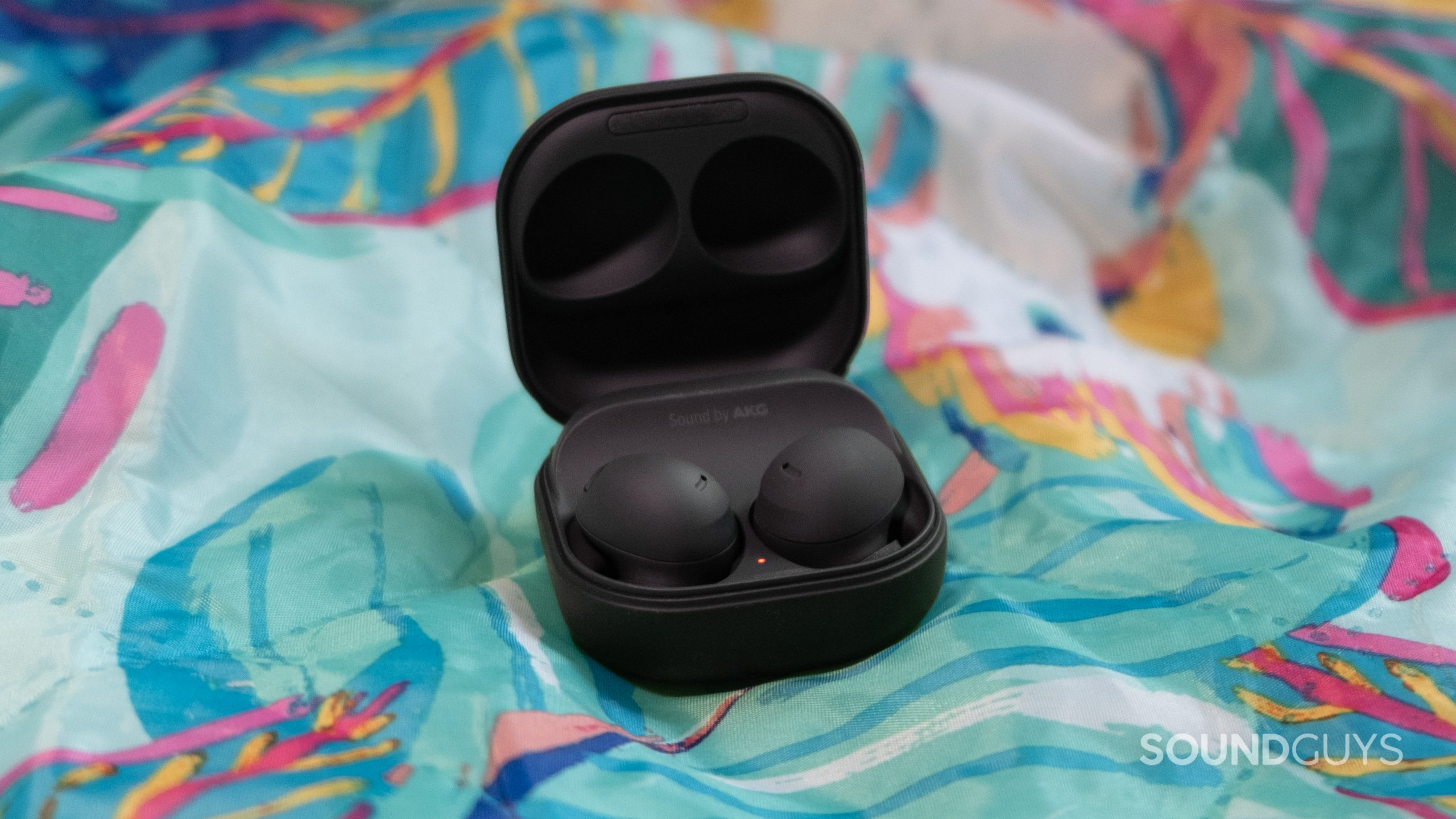
The Samsung Galaxy Buds 2 Pro has some of the best noise canceling we’ve tested. If you want a pocketable pair of ANC earbuds, this is your best bet. The sound quality is also very good and requires little tinkering. You can’t create a custom EQ in the Galaxy Wearables app (Android only), but you can choose from a handful of EQ presets. Plus, when you pair the Galaxy Buds 2 Pro with a Samsung device running One UI 4.0 or later, you can use Samsung’s Seamless Codec. This way, you can fully enjoy 24-bit audio streamed right to your new Galaxy Buds 2 Pro.
Loading chart ...
The Galaxy Buds 2 Pro drops the shiny exterior of the Galaxy Buds 2 and features a rubberized matte finish instead. These earbuds seal to the ear with the help of oblong silicone ear tips. Like the previous Samsung Galaxy Buds Pro, the Galaxy Buds 2 Pro buds merit an IPX7 rating, which means they withstand a drop in the pool.
Battery life is fine on the Galaxy Buds 2 Pro, but it’s not its strength. The earphones last 4 hours and 50 minutes on a single charge with ANC enabled, and the case supports USB-C and wireless charging. Battery life is longer when you disable ANC. Still, we highly recommend the Galaxy Buds 2 Pro for its excellent ANC, comfort, and features.
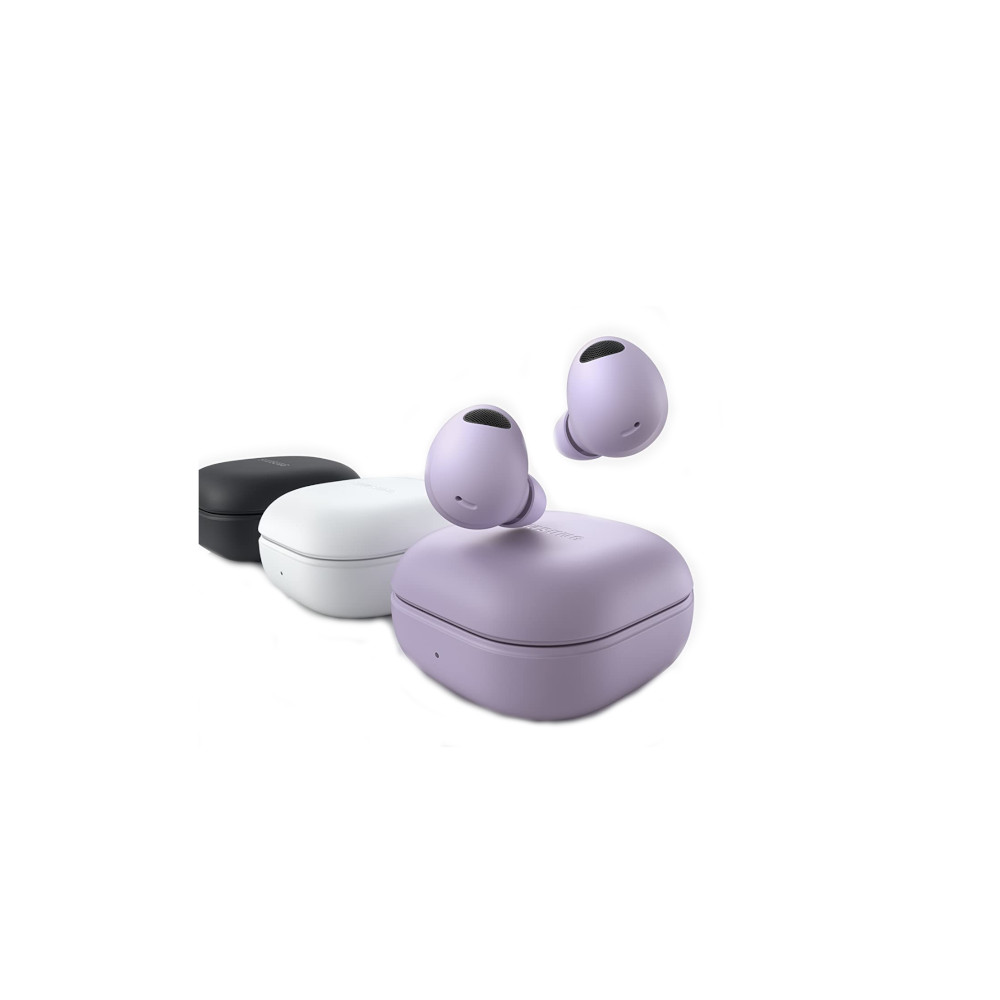
The mic you get in the Samsung Galaxy Buds 2 Pro works well in most situations and cuts down on a sufficient amount of background noise. However, it isn’t perfect, and the person on the other end of a phone call will still hear some of your surroundings. Those with particularly low voices will sound a bit quiet or “tinny” compared to how they sound in real life.
Samsung Galaxy Buds 2 Pro microphone demo (Ideal conditions):
Samsung Galaxy Buds 2 Pro microphone demo (Office conditions):
Samsung Galaxy Buds 2 Pro microphone demo (Windy conditions):
How does the microphone sound to you?
Get the Google Pixel Buds Pro for smart features and good ANC
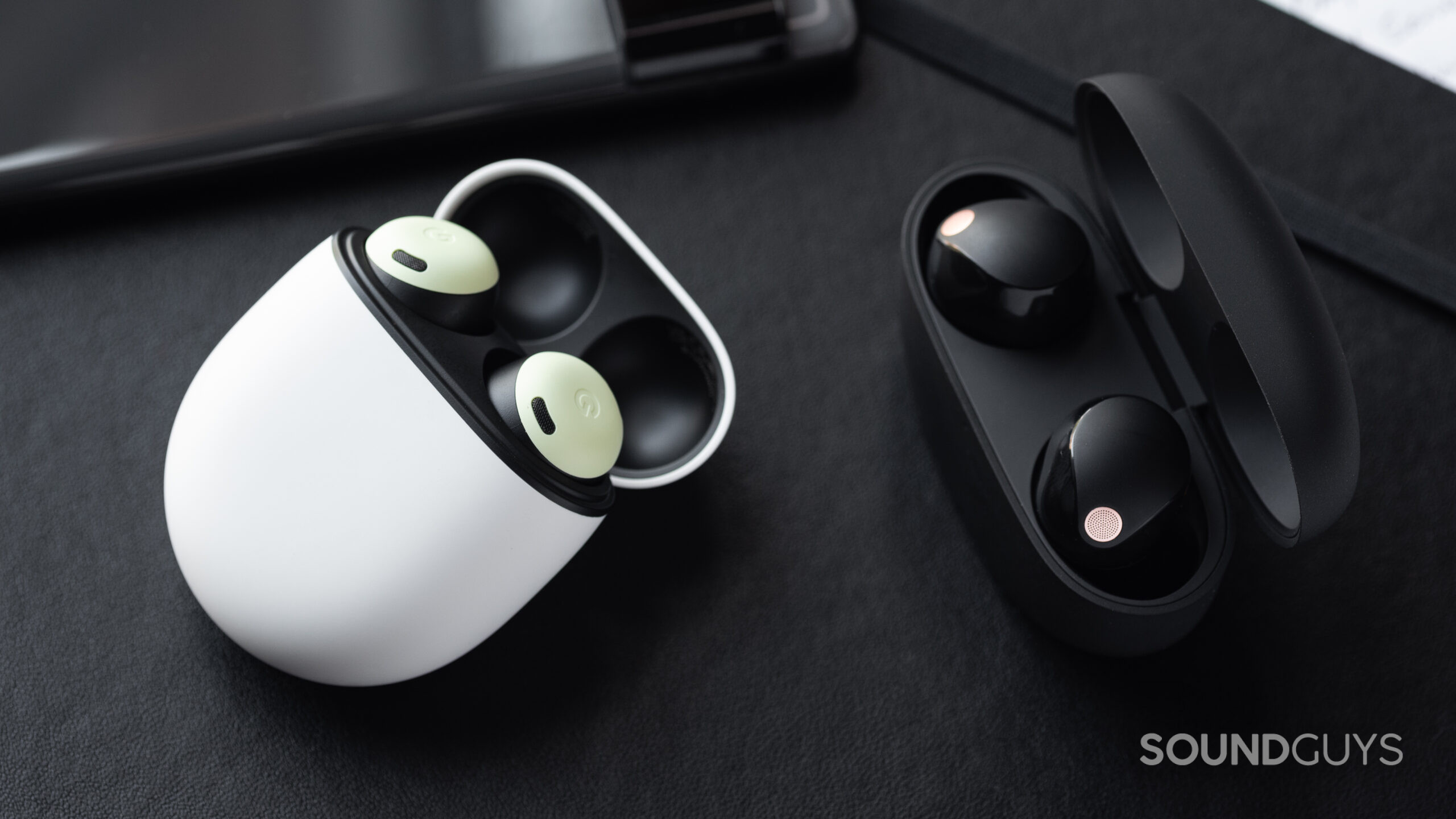
While the Google Pixel Buds Pro looks very similar to the Google Pixel Buds A-Series, a few key differences separate these earbuds. With the Pixel Buds Pro, you get active noise canceling, wireless charging, better battery life, and multipoint connectivity. The noise canceling makes the Pixel Buds Pro a solid set of earbuds for your daily commute, which we can’t quite say for the A-Series. Indeed, the Pixel Buds Pro noise canceling isn’t as good as the Sony WF-1000XM4 or Bose QC Earbuds ANC, but few headsets are.
Loading chart ...
Android users will appreciate the Pixel Buds app, sparse as it may be, because it lets you access firmware updates and customize the experience a bit. Unfortunately, the app doesn’t have a native equalizer, so you’re stuck with the bass-heavy sound unless you seek outside help.
Uniquely, the case comes with an IPX2 water resistance rating, and the earbuds have an IPX4 rating. An IPX4 rating is common for earbuds, but few cases have any kind of water resistance. This is a standout feature for those who live in unpredictably rainy climes. The Pixel Buds Pro isn’t a mind-blowing set of earbuds, but it comes in a nice package and works well. If you have a Pixel phone, you can access spatial audio with head tracking, which is a recent addition via an update.

The best noise canceling wireless earbuds: Notable mentions
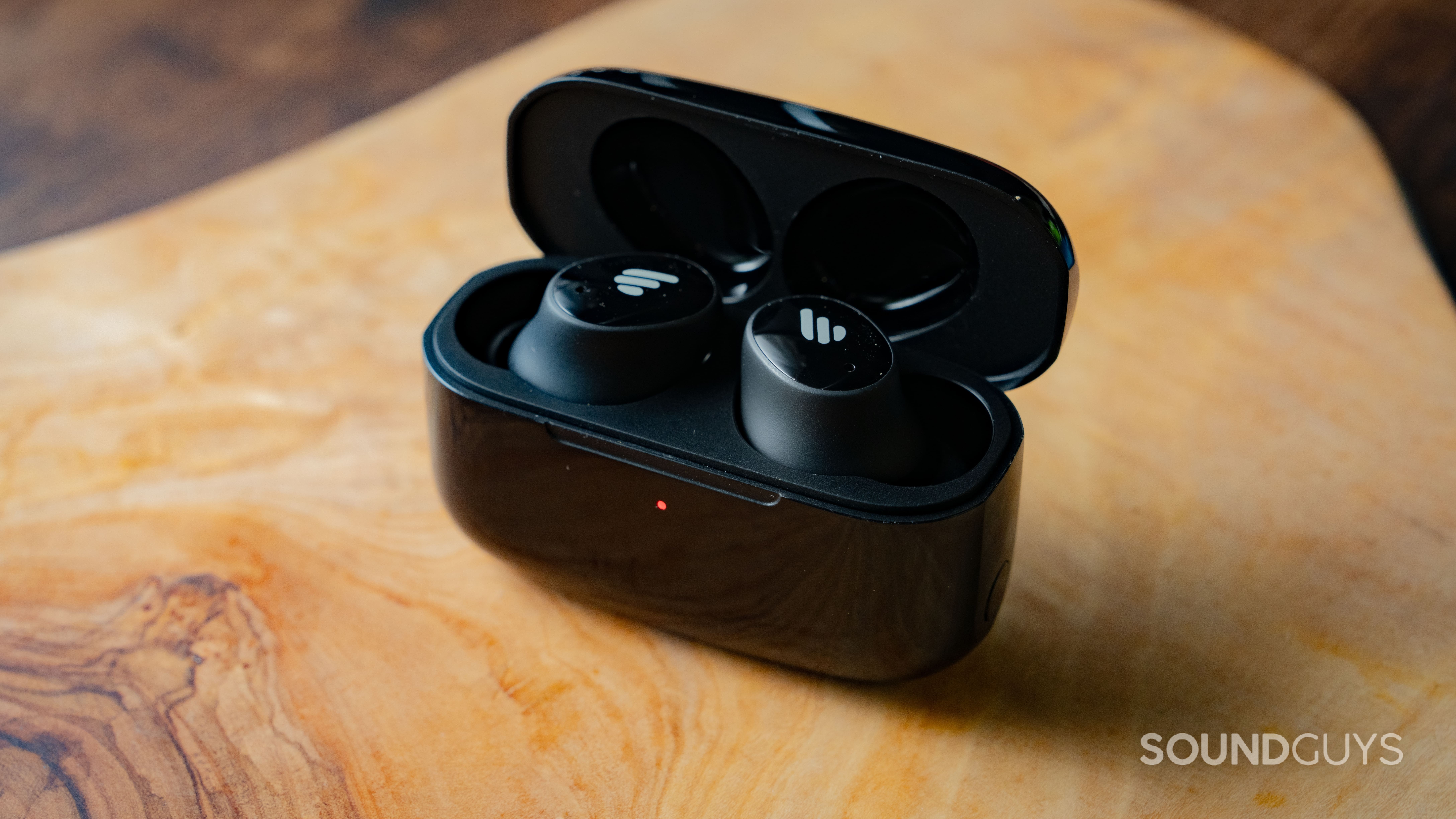
- Anker Soundcore Liberty 3 Pro ($109 at Amazon): Anker packs plenty of features into this compact package. Adjustable EQ and ANC, alongside a multitude of ear tips and ear wings, provide a truly customizable fit.
- Anker Soundcore Liberty 4 NC ($99.99 at Amazon): With an IPX4 rating, long battery life, and good ANC, these are worth a go.
- Beats Studio Buds ($99 at Amazon): This pair of earbuds made by Apple works just as well on Android phones as it does on iPhones, making it a good option for people who switch phones often. It doesn’t have an H1 chip, so you miss out on some special features like battery optimization or hands-free Siri, and the ANC isn’t as good as the AirPods Pro.
- Bose QuietComfort Earbuds II ($249 at Amazon): These have has great active noise canceling (ANC) and some fascinating features but are primarily for those who an affinity for Bose.
- Bose QuietComfort Earbuds ($154.96 at Amazon): These are a great do-it-all option for anyone and are cheaper nowadays. You can choose the degree of noise canceling and enjoy features like automatic ear detection.
- Edifier TWS1 Pro 2 ($49.99 at Amazon): It’s rare to see active noise canceling (ANC) in $50 earbuds. It is exceptionally rare to see ANC in budget earbuds that actually perform well. The Edifier TWS1 Pro 2 earbuds hold their own against popular earbuds that cost four to five times as much money.
- Nothing Ear ($149 at Amazon): For the price, these are pretty well-rounded earbuds, but the ANC is just okay, reducing the loudness of most sounds by around 75%, but it will change the sound quality when activated.
- Nothing Ear 2 ($149 at Amazon): There’s plenty to say about Nothing and its second installment of wireless earbuds. Directly competing against the AirPods Pro and other powerhouse products, the Ear 2 brings ANC, an IP54 rating, wireless charging, and a comfortable fit.
- Grell Audio TWS 1 ($216.81 at Amazon): This is the first pair of buds from Grell Audio, a company of former Sennheiser chief headphone engineer Axel Grell. The TWS 1 focuses on sound quality above all else: there’s no fancy packaging or gimmicks. It supports the unusual combo of SBC, AAC, aptX Adaptive, and LHDC codecs. You get a solid set of ANC earbuds with a beautiful design for a reasonable price.
- HyperX Cirro Buds Pro ($79 at Amazon): These earphones are excellent gaming earbuds with a decent mic, good sound quality, and better-than-average ANC for less than $80.
- Jabra Elite 7 Pro ($199 at Amazon): A tight fit brings a ton of passive isolation to the Jabra Elite 7 Pro. Throw in ANC on top, and these earbuds have no problems blocking out environmental noise.
- Jaybird Vista 2 ($117 at Amazon): Jaybird adds noise canceling to its beloved Vista wireless earbuds and manages to make the whole package even more durable, from the earbuds to the case.
- Logitech G Fits ($229 at Amazon): While not a noise canceling product, it uses a custom-molded tip to form directly to your ear to achieve very good isolation. For anyone who doesn’t like the sensation of ANC, this might be a viable alternative.
- Samsung Galaxy Buds 2 ($99 at Amazon): The Buds 2 earphones are a great pick for Samsung phone owners who don’t want to spend on the Buds 2 Pro from Samsung. These earphones offer very good ANC and many of the same features as the latest flagship but for much less.
- Sennheiser CX Plus True Wireless ($89 at Amazon): These earbuds build upon the success of the previous CX True Wireless, and this time around, Sennheiser includes noise canceling, which performs rather well on these nice sounding earbuds.
- Sennheiser MOMENTUM True Wireless 3 ($169 at Amazon): The predecessor to Sennheiser’s latest flagship earbuds proved that you can pack great sound and active noise canceling (ANC) into a sturdy built set of earbuds, and can now be found for a lower price.
- Skullcandy Rail ANC ($79.99 at Amazon): For under $100, the combined ANC and isolation on the Rail ANC does the job reasonably well. The isolation blocks high-pitched environmental sounds.
- Sony LinkBuds S ($148 at Amazon): This pair of earbuds has ANC that rivals the WF-1000XM4 from Sony. If you don’t mind the plain design and average battery life, this hits a nice sweet spot.
If you are on a budget, see our list of the best cheap noise canceling earbuds. Also, check out our list of the best noise canceling headphones if you prefer more reliable isolation by wearing something over your ears.
Take SoundGuys’ quiz to find your best fit
What you should know about the best noise canceling earbuds
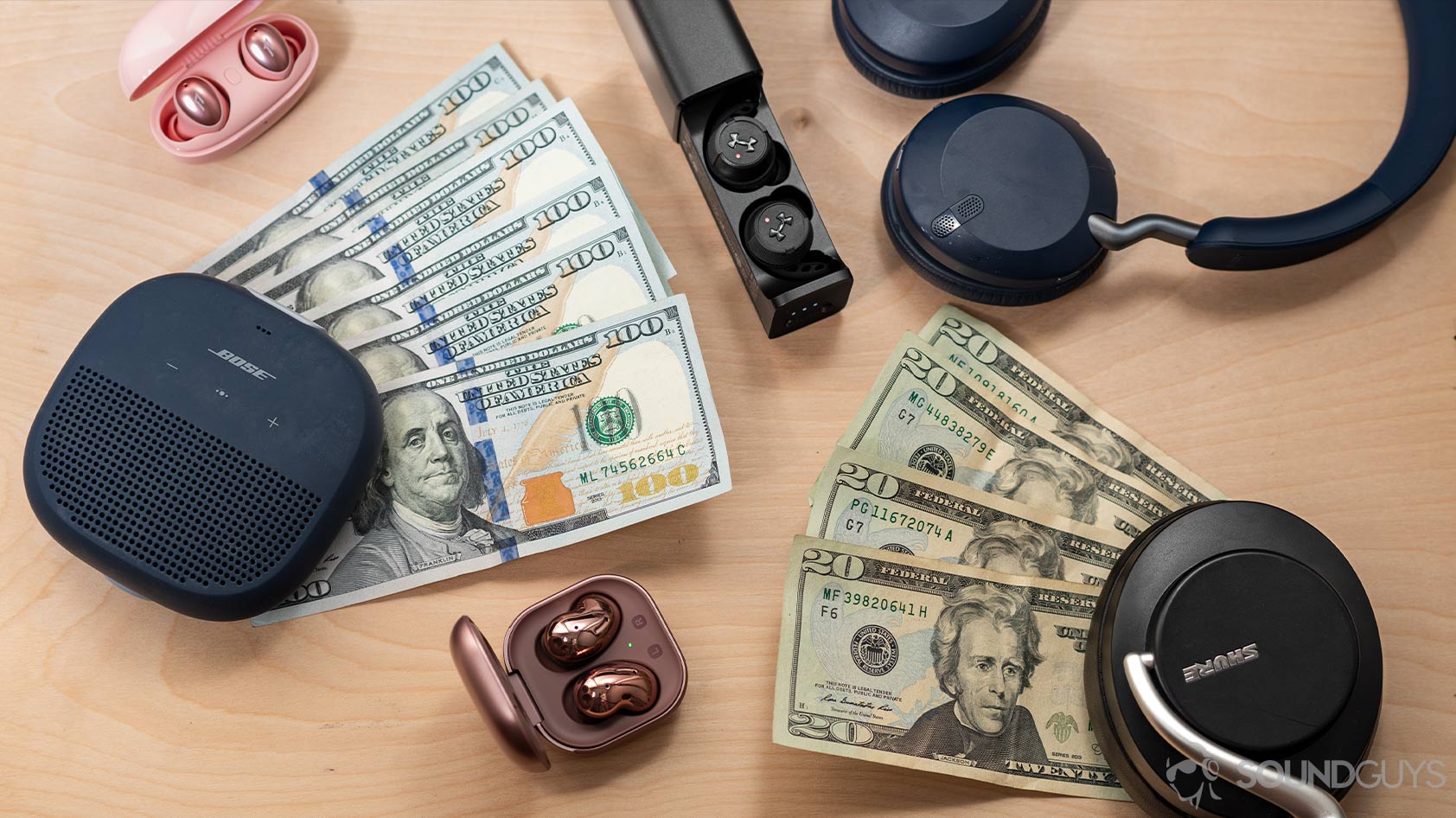
If you’re in the market for noise canceling wireless earbuds, you need to know a few things about what you’re getting into. Wireless earbud fans probably already know what to expect from their new sets, but if you’re taking the plunge for the first time, there are a few things to go over. We don’t want you running into something unexpected, after all.
How should the best noise canceling wireless earbuds sound?
Noise canceling earbuds shouldn’t necessarily sound a certain way, but you’ll see commonalities between how the most popular headsets sound. Why? A majority of consumers prefer a sound profile with boosted bass and treble relative to the mids. Seeing how all of the earbuds we recommend here are marketed toward the general consumer, you’ll find a similar frequency response among these headsets.
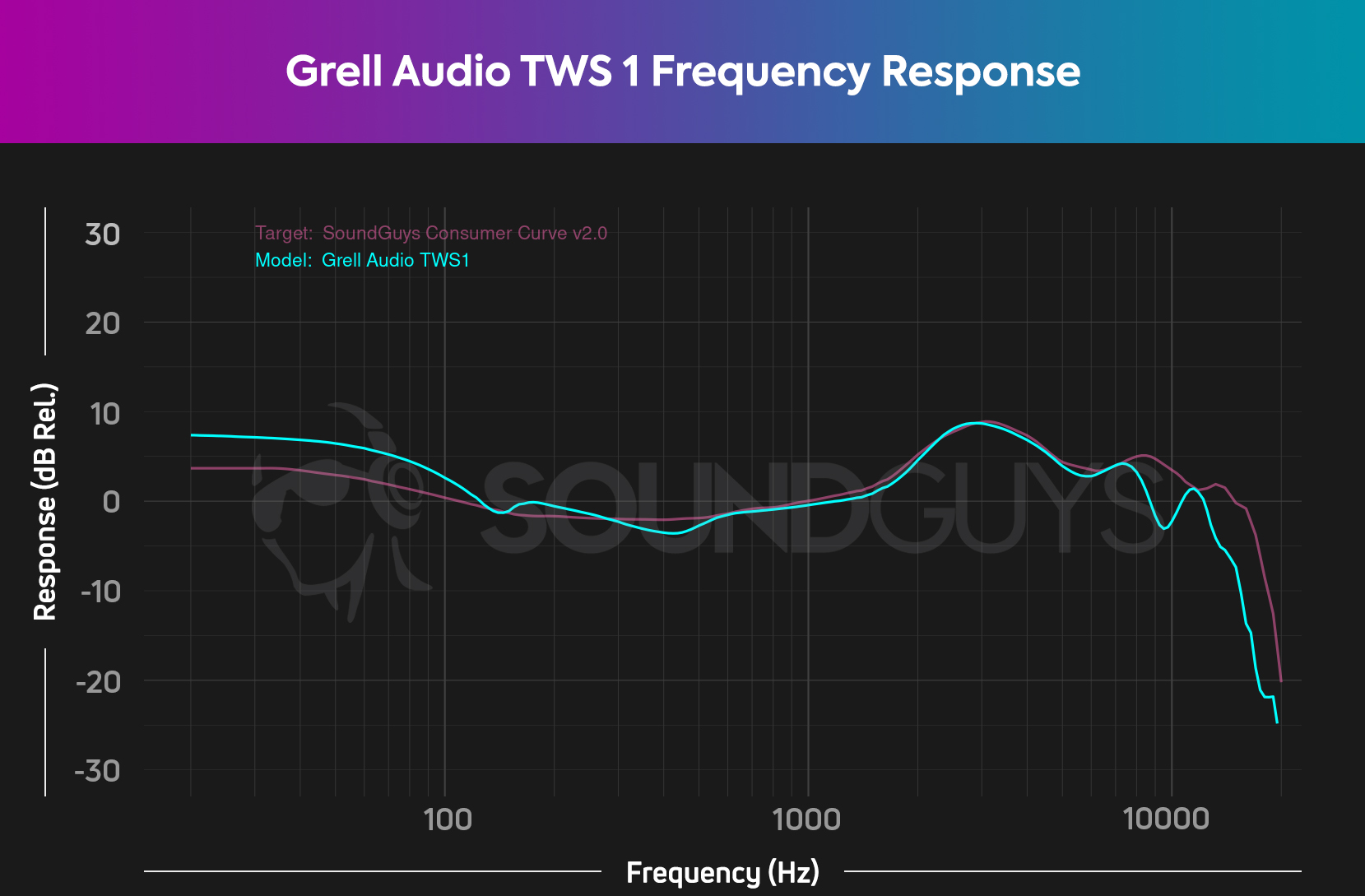
In the chart above, you can see an example of a pretty standard frequency response from the Grell Audio TWS 1 noise canceling earbuds. This headset very closely follows our target consumer curve, though it boosts sub-bas a bit more than we recommend, but it remains tasteful. Perhaps you’re in the minority who really likes bass or have an aversion to it; in that case, you may need to EQ the sound.
Are noise canceling earbuds actually good?
Yes, noise canceling earbuds can be quite good and effective, but one constant we’ve found among ANC wireless earphones is that the ANC performance is inconsistent. Active noise canceling works best against loud, droning sounds that don’t have a lot of changes to them over time. You’ll find that people talking near you still come through, but computer fans, office noise, and engine sounds get muted out.
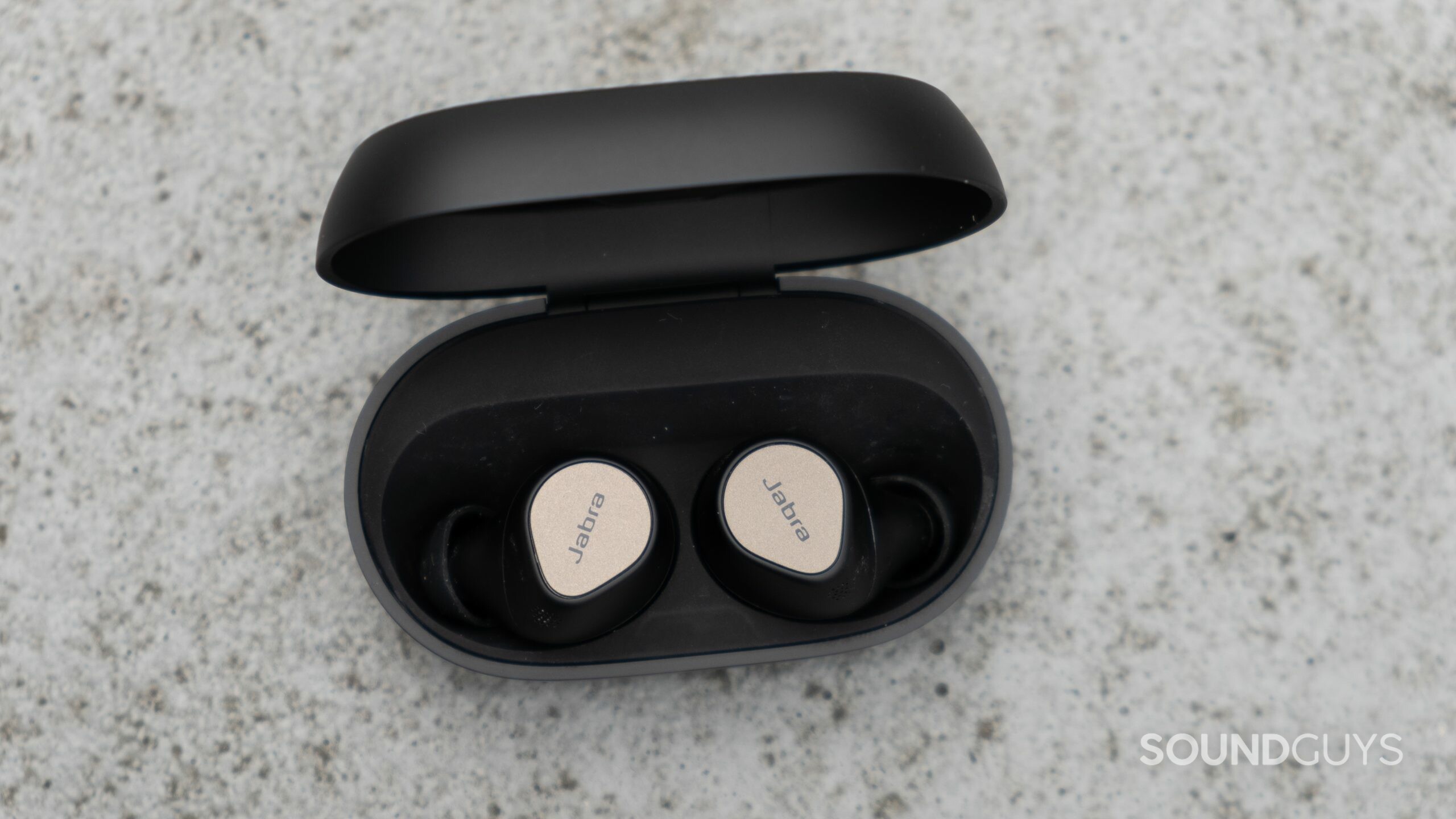
Because wireless earbuds generally don’t have the space to cram in the hardware necessary to cancel out a ton of noise, it’s a miracle they’re able to work at all. Major props to any company that can get an ANC unit working reasonably well in this form factor! Bear in mind that you also need to get a proper fit with your earbuds in order to get the best isolation. Good isolation yields the best possible ANC because it means there’s a physical barrier between your ear canals and the outside world.
Active noise canceling is extremely important to listeners because it not only allows you to listen at a lower volume but also improves the perceived quality of your music. That said, you may find that the difference between having ANC on and off isn’t really all that big, and in fact, you may want to turn the feature off sometimes to squeak out some extra battery life. While you only get, on average, 20-40 minutes more, it could help out in a pinch.
Battery life isn’t great, even on the best noise canceling wireless earbuds, so get used to it
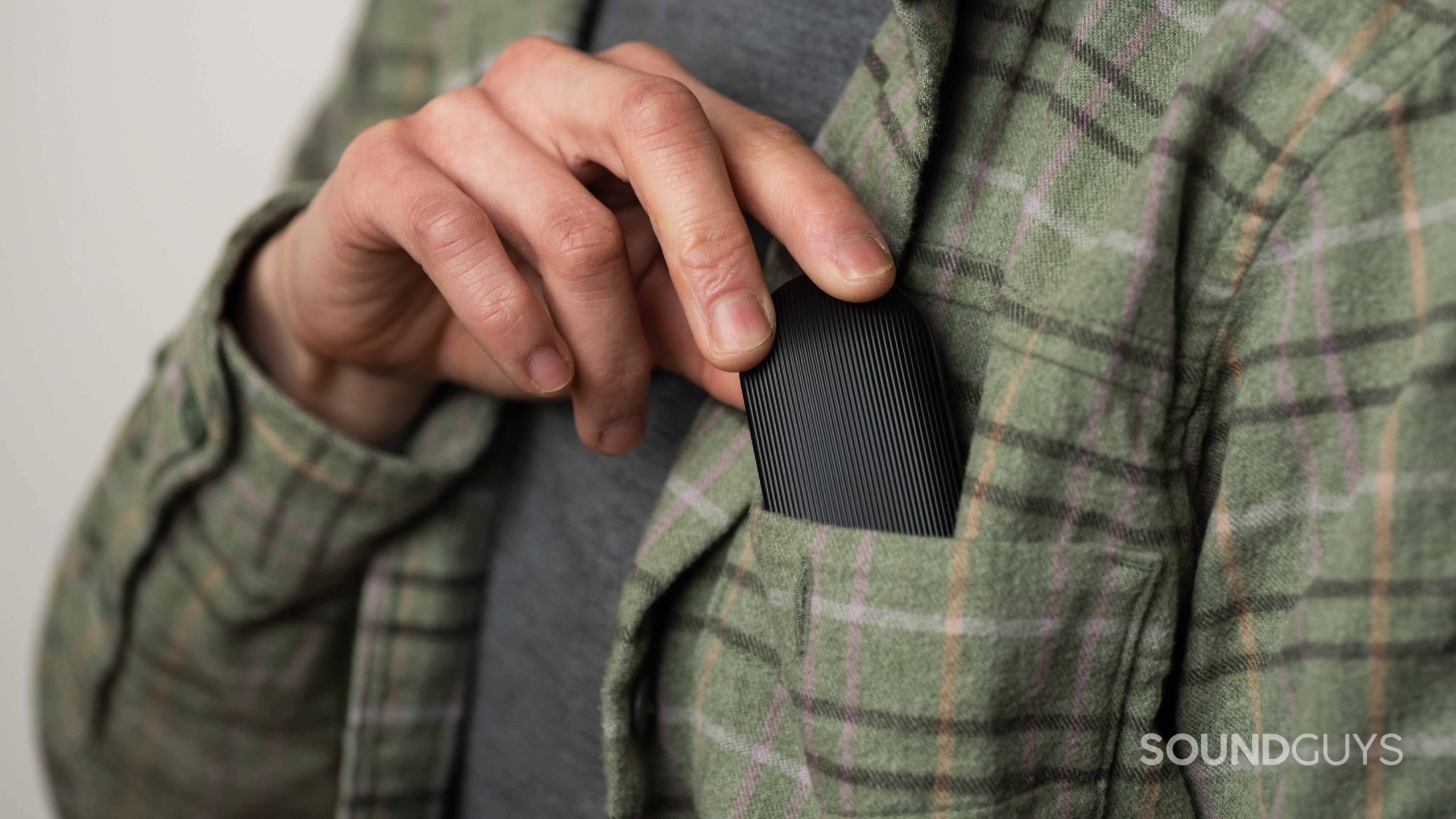
Because wireless earphones can only fit so much battery into a teeny-tiny housing, they’re unsurprisingly terrible at the whole “not needing to recharge” thing. That’s why most wireless earphones stash a bigger battery in their carrying case to recharge the individual buds when you’re not using them. This way, they appear to have much better battery life than they actually do. If you’re on a long commute, however, you’ll notice that your buds drain faster than they ought to.
Thankfully, battery life tends to last more than the average four hours required by most people to get to and from work without a recharge. Well, that would be true if the nature of wireless earphones didn’t put immense wear on the tiny cells they have.
Have you noticed battery life degradation with your true wireless earbuds?
Because of the fact that you’re going to be charging and depleting wireless earphones so many times more than you would a normal set of Bluetooth headphones, you’ll find that they hold their charge less and less over time. Some owners of the original AirPods find that after two years, the buds only seem to hold their juice for about 15 minutes at a time. Obviously, that’s a huge bummer, but don’t let that dissuade you: just be aware that buying wireless earphones isn’t an investment in the future, just so long as you recycle them when they die.
Noise canceling earbuds are not hearing protection
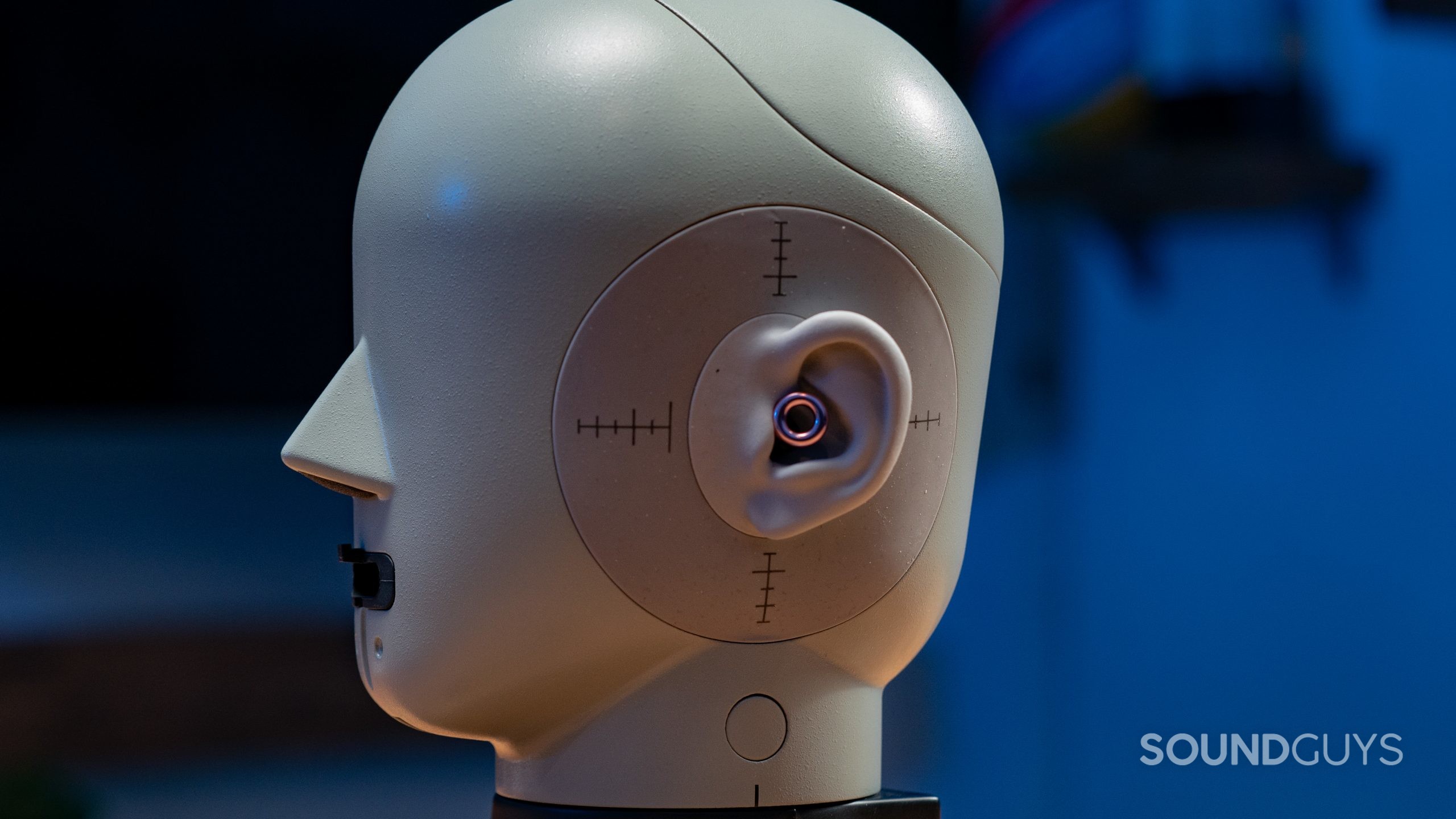
Though the products may cancel noise, earbuds with ANC are not hearing protection and should not be counted on for this purpose. If you want something to protect you from the din of a concert or commute, you need something that’s actually meant for the job. You need hearing protection.
Why you should trust SoundGuys
Not only is this our day job, but we’ve tested the best of the best out there for as long as “true wireless” has been a thing. But we’re a little different at SoundGuys: we show our work and take our integrity very seriously. Our singular mission is to lay the facts bare as they are, and we have the expertise, drive, and ethics to do it. At the end of the day, we want you to find what you’re looking for and enjoy it enough to keep it.
We don’t do paid reviews. We go out of our way to ensure that our reviews and lists are backed up by objective testing wherever possible so that you don’t have to take our word for anything—you can examine the facts for yourself if you want.
- We updated this list on November 19, 2024, to add a video comparison showing the noise canceling performance of all of our top picks.
- We updated this list on September 24, 2024, to add a section on the AirPods 4 with ANC as an affordable alternative to the AirPods Pro 2 for iPhone users.
- We updated this list on June 26, 2024, to add the Jabra Elite 10 Gen 2 as the new top pick.
Frequently asked questions
No, generally, noise canceling earbuds are not as good at blocking out noise as noise canceling headphones. Headphones generally have better passive isolation, which yields more effective active noise canceling. Headphones are also just bigger and can house more microphones to record and bock out noise through destructive interference.
Sadly, no. In order to update the firmware of your AirPods Pro, you’ll need to connect it to a compatible iOS device—an important limitation to consider when buying these earbuds. If you’re looking for earbuds outside of Apple’s ecosystem, check out our list of the best AirPods Pro alternatives.
The Samsung Galaxy Buds 2 Pro is better than the Sony WF-1000XM4 with regards to noise canceling. It’s not by a lot, but the Galaxy Buds 2 Pro cancels out low-end noise better than the WF-1000XM4, giving it a slightly higher score in our testing. For more on how the two compare, check out our article on Samsung Galaxy Buds 2 Pro vs Sony WF-1000XM4 here.
Exactly 0 hours and 0 minutes.
No. Lossless audio is not a thing with Bluetooth. However, you may find that you don’t actually experience much benefit from it while you’re commuting or are in other high-noise environments, so it’s not a big concern.
Yes, if you often find yourself in noisy environments (e.g., commuting, traveling, or working in a bustling office) and value clarity in audio or peace in silence, noise canceling earbuds can significantly enhance your listening experience.
Active noise cancelation (ANC) is generally the most effective noise canceling technology for earbuds. It uses microphones to pick up external sounds and produces opposite sound waves to cancel them out.
Yes, in the sense that they can allow you to listen to content at lower volumes since background noise is reduced. This can potentially reduce the risk of hearing damage caused by prolonged exposure to loud sounds. However, like any earbuds, they should be used at safe volumes and not for excessively long periods.
- Cost: They tend to be more expensive than their non-noise-canceling counterparts.
- Battery Dependency: Active noise cancelation requires power, so there’s a need to charge or replace batteries.
- Possible Pressure Sensation: Some users report a sensation of pressure or “ear suck” with certain noise canceling headphones.
Prolonged use of any headphones or earbuds can lead to ear fatigue or even contribute to hearing loss if played too loudly. Noise canceling feature per se isn’t harmful, but it’s recommended to take regular breaks to give your ears a rest and ensure you’re listening at safe volumes. Also, being overly isolated can be unsafe in certain situations, like walking near traffic.
The AirPods Pro (2nd generation) is the better option for you since you own an iPhone than the Bose QuietComfort Earbuds II. With the AirPods Pro (2nd gen), you can actually disable the ANC and access features like personalized spatial audio. Unlike the Bose QC Earbuds II, the AirPods Pro (2nd gen) case supports wireless charging, but the QC Earbuds II case charges via USB-C (instead of Lightning), which is nice.
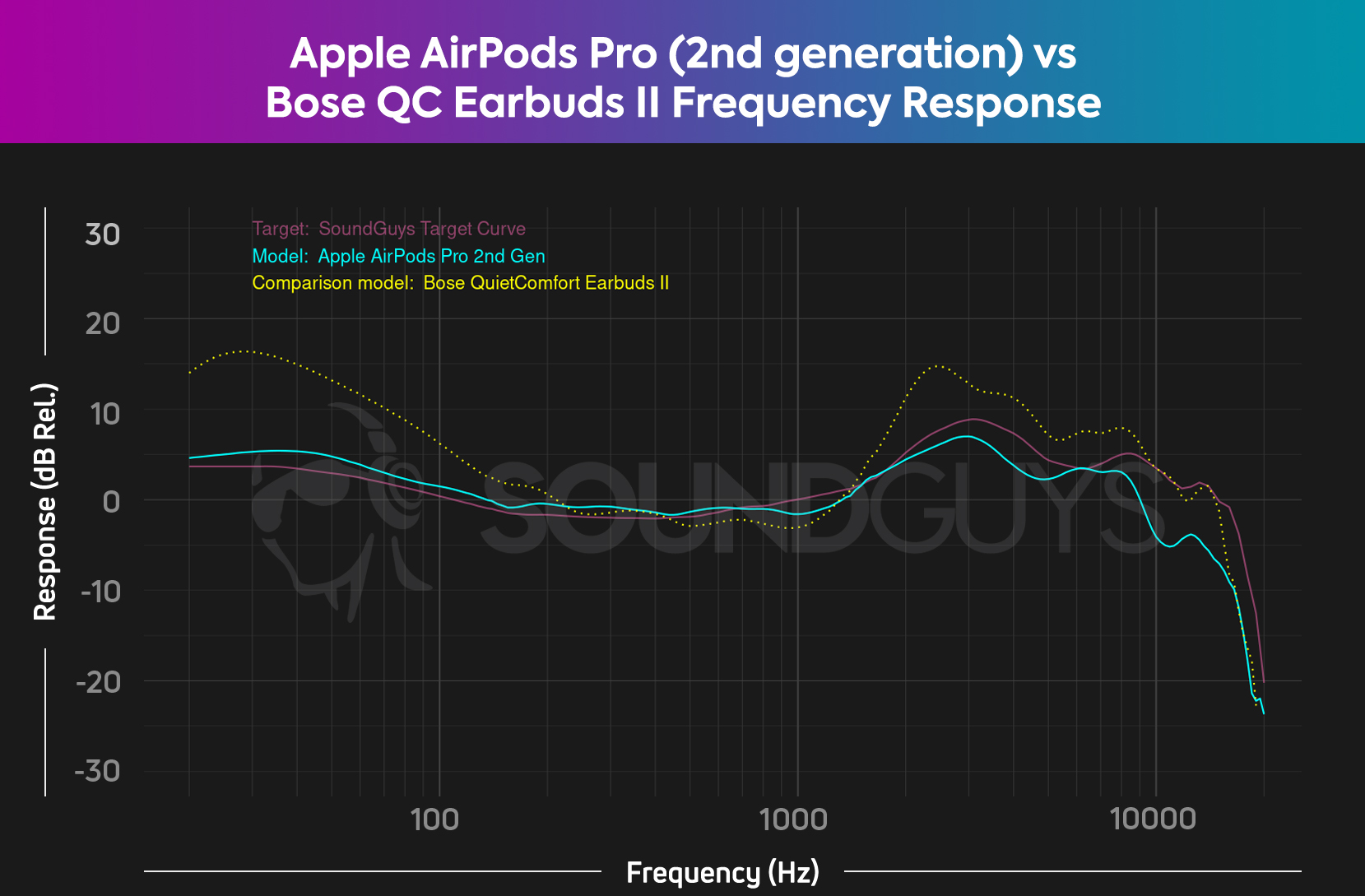
Compare how the AirPods Pro (2nd gen) and Bose QuietComfort Earbuds II sound, and you’ll find the AirPods Pro 2 comes out on top. As of October 17, 2022, Bose’s earphones wildly boost bass notes. While dedicated bassheads may like this, the masses won’t. At least with Bose’s earbuds, you can create a custom 3-band EQ from the app (something you can’t do with Apple’s AirPods unless you download a third-party app).
Firstly, the Samsung Galaxy Buds Pro is discontinued. Otherwise, the Samsung Galaxy Buds 2 is a very good set of noise canceling earbuds; in fact, its ANC edges out the Galaxy Buds Pro. What holds the Galaxy Buds 2 back is that the Buds Pro has a more durable IPX7 rating and has a slightly better frequency response for most listeners.
There’s a less exaggerated difference between lows, mids, and highs through the Buds Pro compared to the Buds Plus. This is important as neither the Galaxy Buds 2 nor the Galaxy Buds Pro has iOS app support, so what you hear is what you get. When you use the Samsung Galaxy Buds 2 and Pro on Android, you can at least use the Galaxy Wearable app to choose from a handful of EQ presets to adjust the sound accordingly.
If you want to save $50 and feel that an in-app ear tip fit test would help you figure out which ear tips to choose, the Galaxy Buds 2 is a great pair of earbuds. For most listeners, however, the greater durability and better sound quality of the Buds Pro is worth the extra cash.
iOS 14 added new features to the AirPods and AirPods Pro headsets: Spatial Audio was a highlight, which is Apple’s approach to the in-ear surround sound experience. Spatial Audio on the AirPods Pro makes it feel as if you’re at a live concert or in the middle of a war zone, depending on the content you’re playing. Another new feature is automatic device switching, which lets you effortlessly move from one Apple device to another.